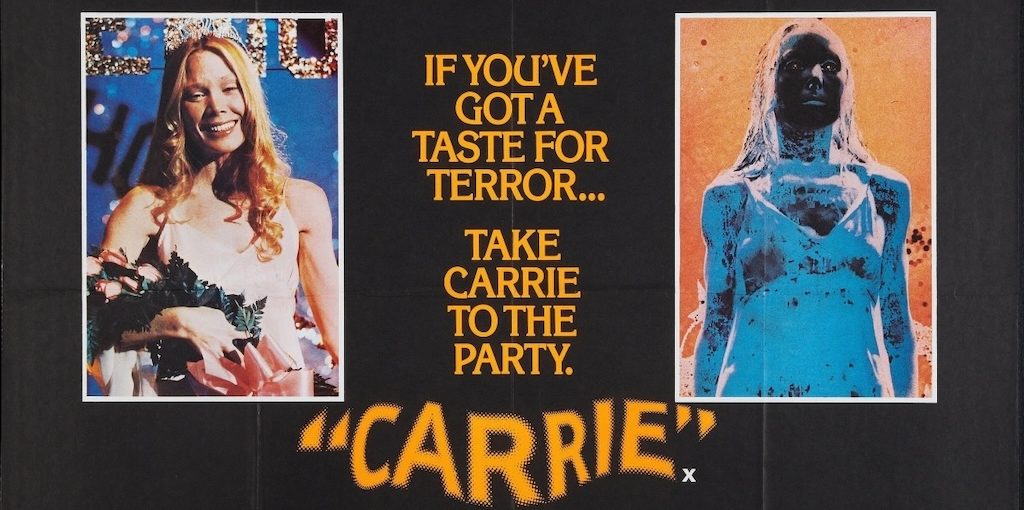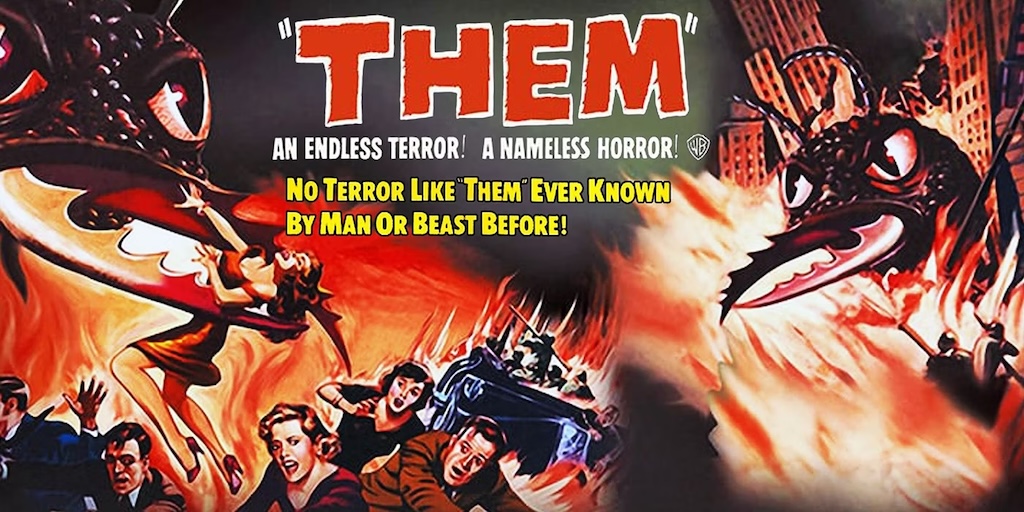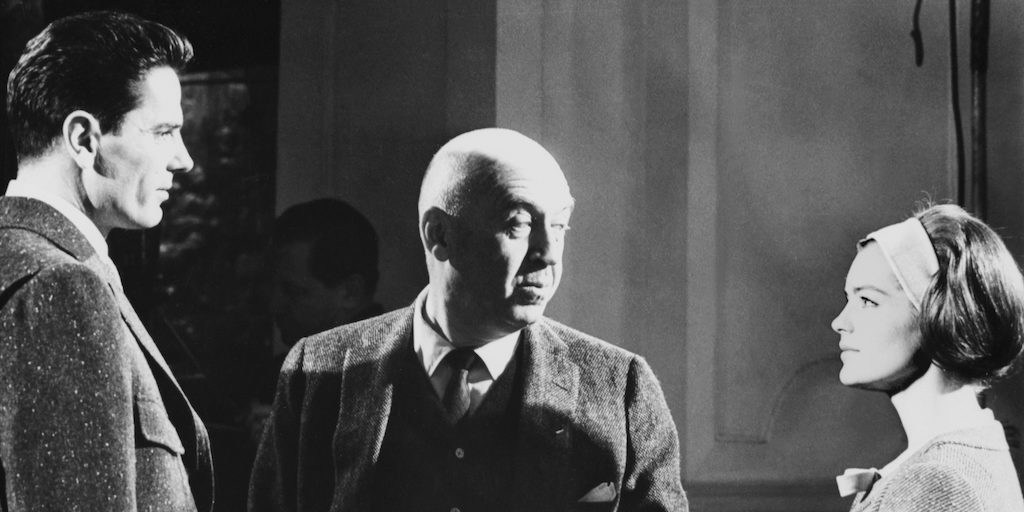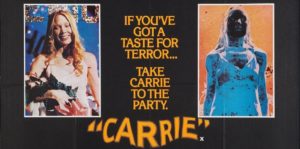THE MACULATED CONCEPTION, OR WAR ARRIVES TO THE COUNTRY
That’s the whole trouble. You can’t ever find a place that’s nice and peaceful, because there isn’t any. You may think there is, but once you get there, when you’re not looking, somebody’ll sneak up and write “Fuck you” right under your nose.
The Catcher in the Rye, J.D. Salinger
1.
The self-awareness of the Concept of Cinema cannot be today, and since two or three decades up to the present, nothing more than a headfirst dive into genre. Genre cinema and its efficient and exemplary way or form: the thriller, that is and since we had written it decades ago, the translation of melodrama after total mobilization; therefore, the last form of preservation of tragic representation.
And that at the same time while taking into account the very bi-frontal nature of the thriller: the crime drama and the fantastic; or that synthesis between both forms that rendered some results that were more than satisfactory.
But that plunging is not a suicidal jump into the void. One must have the proper parachute, which consists of knowing inside out the difference between the “that you know” and “what you know”. But after knowing and assuming that difference crossing that Rubicon of self-awareness, to know how to continue first and occupy later that mental-symbolic as well as emotional-spiritual “space”…
It is not about, as it becomes more frequent, a myopic tour down Nostalgia Boulevard, where the monster of cinephilia lurks at every step, that tries to petrify us with this new manifestation of the medusean sign, the algorithmic cinephilia.
More than a ride or travel of an occasional tourist in the land of the Concept of Cinema, it is about inhabiting places that are sometimes exiguous or have rooms that are overcrowded with bits and pieces And others where what prevails is the carnavalesque and undervalued exchange of the vanity fair that is trivia, the mere quoting and the posterism.
A film, a thriller at this moment of self-awareness is a safe dwelling. Even more if that dwelling is also an ambush.
Cinema, or what is left from it as a concept ––that is the ultimate and possible form of thought and poetry, at least in the West––, is more than obviously being submitted to a depletion of sense. Accordingly to the emptying of every traditional element that was a deep delving aspect of the European spirit.
2.
This self-aware walkthrough is about the self-affirmation of a property. Of a nomos. A film cannot exist today, or henceforth, taking part in the Concept of Cinema that is not also an agonic mise-en-scene.
And what better for that agon to also be an image-action.
Every film, every thriller must not only be in the obligation ––to be cinema–– to tell two stories, as we have expressed in our theory. A first story, or comprehensible and transparent “plot” and a second story, symbolical but open to intellection, and not forced into guessing by the puppet of allegory.
A third element, or third wheel, is now added. The story of its own self-awareness. Some sort of logbook or journal, both private and openly public, that subtly points out the particular course of that hermeneutic path.
More than ever, a film must also be the private history of its appropriation as a spiritual intention.
3.
In Damián Szifron’s To Catch a Killer ––his first English language film and the first with an American diegesis–– the points expressed above can be found perfectly and meticulously.
Szifron displays, symmetrically to the double diegesis of his film, a compound comprised of a series of doubles ––exterior/interior; open/closed; anonymous/particular–– the same way he explores accordingly to the ongoing investigation of a crime both anonymous and collective, the very double articulation of his particular ethos.
The ongoing police investigation makes a pendant with his own delving about the Concept of Cinema. Every fingerprint, plant, stroke, fragment sought by, or better said stumbled upon, both fictional investigators, represent the filmmaker’s own research, who returns to those random milestones of reference about his own inquiry.
Is not cinema after all the art of controlled randomness?
Because it deals today, and with absolute urgency, about the only possible procedure. How to extract, and try to turn or re-turn into operative status that which it was taken to the inflationary heights of speculation?
To employ a traditional image: How to extract the rock of madness from the interior of that global head so profuse in quotes and clichés filled with noise and apathy which today mean less than nothing?
4.
We are in the city of Baltimore; where Poe was murdered.
In the middle of a chaotic new year’s eve orgy, where the legendary potlach has become mere consumption and exchange of a transgression elaborated at the same laboratories that created the prior puritanical mental atmosphere ––now turned into progressive placebo––, a sniper, who will turn his shooting into an in extremis frankness, eliminates a series of random people; as an appendicular projection in that screen-world of his own anonymity.
Or is it a “perverse” form of jumping above that anonymity by shooting over a collective anonymity?
5.
Two representatives of the state repression, placed in a diverse degree of integration ––or legalized tolerance?–– find each other and join forces, be it by chance or need, to solve the case. That is, to make the anonymous to be public.
Geoffrey Lammark is a semi-retired ––or sought to have retired–– and sick FBI agent; those three letters that still irradiate an aura of perfection; and also of official anonymity.
While this sniper appears as the Other par excellence. A gigantic zero. It is the anonymous seeking to call out his own name. An unnamed name or sunk into what the reductionist sociology created in the same territory cornered within that spacious comfortable ghetto called “silent majority”. Of whom one of its members now seeks for his voice turned scream, even into a howl.
Joining Lammark’s investigation is police officer Eleanor Falco: a semi-pariah, not yet integrated, but at the verge of stepping ––also desiring?–– into the configuration of a tolerated difference. She lives at a meager pigsty, as tight as the reduction of her personality. One that she has tried to reduce even more, or also make her nothingness anonymous, by way of suicide. That constantly open door that also is ––as Schopenhauer would say–– a repeated disappointment, absurd and useless; given that once again we have been deceived by that ever treacherous lover that is life.
The fully integrated Lammark, a homosexual legally and civilly married (“Since we were allowed to do so”), and the seemingly opaque Eleanor Falco ––without a doubt a falcon deprived or self-deprived of her claws, but not of her watchful and subtle eye–– “bond” in a hallway that we could call here the residue of a “past life”. Once lived in ––just like in classic cinema–– amidst a “forest of symbols”.
Where freedom ––and its correspondent misfortune–– was not granted by decree, but taken for itself. Appropriated.
Exactly in symmetry with the pretending-to-be-legendary basis of that very country. At gun or rifle-point and invading foreign territories. Now well, was this the procedure because of its nature as eminent domain? That is, were these unclaimed values and places put into disposition of whomever took them first? Wild horses that could be tamed to the liking of the newcomer? Or were they a foreign and branded cattle to be usurped?
6.
We are in the middle of the chaos and disorder of a New Year’s Eve celebration; a parodic inversion of the old rite when the impossible yet desirable return to a “golden age” ––here turned into a perpetual iron age–– was ritually mentioned, where nothing seems to merge and transmute into something else.
In the middle of this, police officer Falco, after fainting, is first masked in a rush (with what is “kept around handy”) and then once again masked, but professionally.
“I’m going to change your mask, do you understand?” says another anonymous paramedic.
A perfect example ––one of many in this film––, of how to organize and, above all, sustain the mise-en-scene. That is, the convergence between the material support and its usual meaning ––oxygen mask used for faint or suffocation––, and “if we will” ––in a symbolic sense–– mask (or masquerade?) of a function or role employed as a distinctive sign, but legal.
But that change of mask, for a better one? A perfected one? With more what? It does not matter. It is always necessary as an origin story, or better said as a mythologeme, a change in the ontological status of the neophyte. And what is Falco if not a neophyte turned or reduced here to the role of novice or apprentice seeking for her rebirth.
Given that all the modern elements, figures, characters and crafts are liberal reductions, now also global, of traditional symbols… If these persist, is thanks to a certain way of thinking and poeticizing that is not submitted to this asymbolia. Cinema knew how to be, and can continue to be the privileged medium to carry on with this operational nature.
7.
For example. We see Falco in her coming and going, repeated and solitary, in a swimming pool-fish bowl, and remits both to her spatial reduction and her replacement for a necessary and archaic immersion into primordial waters.
Then we see her already settled (Is she taking a “sitz” bath?), but in the particular, interior waters of her bathtub.
It is not the support what is important, but the conditio, the new branding, because the previous phase has already been branded (Lammark).
8.
That branding is ––according to Lorenz–– an early successful ethological fixation or imposition through a substitute branding. This “falco” sharply discovers the fingerprints and prior strokes; given that she still has not entered the insides of that prior legally resolved identity conflict. That very law that has allowed Lammark’s marriage union, “branded” shortly before as not only illegal but also as immoral, like the “scarlet letter” of the originary Calvinist lore.
Here, by sleight of hand, something was unbranded, while the branding of this soon-to-be-domesticated falcon keeps the functional atavism of a gaze that fixates in the minutiae.
To employ another and already classic imago: Lammark lives located on the tapestry but turned into a mere domestic carpet; Falco, still atavistic, can instinctively follow the primigenial strokes of the figures in that tapestry.
9.
Just like Aaron Hallan in William Friedkin’s The Hunted, this “misanthrope”, named Dean Possey, has been or has suffered an early double branding. As his father’s son that has “branded him by fire”; and as son of the homeland, that former extension of the paternal function. One that is totally absent here. It only appears in a biased way when in the middle of the ongoing investigation we find a “classic” family ––not for nothing Latin-American––, where the wife literally pushes the husband to make a decision and confess; while she takes the son of both of them ––we suppose–– from his hands.
The father, that which is paternal, lies there still, but only as a biological hindrance within total mobilization.
10.
Dean Possey has tried to once again inhabit that supposedly immaculate primigenial nature, like the pioneers of which a certain part of America still seem to get deeply involved when it shelters in the nostalgia of that supposedly originary innocence.
We know from their particular witnesses ––going from Huckleberry Finn to Holden Caulfield, up to the already mentioned Aaron Hallam–– that this is impossible. Because in the originary conception of that territoriality there was a blemish, a cainite scar that tries every single time to be desperately covered, crossed-out, through expansion and material gigantomachy. Taking the war to the exterior, always to a foreign outside, to attempt ––impossible as it is fake–– a reconversion of that blemish, that original sin, into war and even ––if it is necessary to his ends–– baptizing it as a “peace mission”.
The failure of Dean’s de-mented revolt against the permissive horizontalization of the “agenda of goodness” is done by that Other which is needed for that agenda to be wielded as “progress”. Such is Tony Montana’s diatribe in Brian De Palma’s Scarface: “I’m necessary as a bad guy so you can think you’re the good guys” (quoted from memory).
Facing the cyclical failure of this already impossible ambush, it only takes for Dean’s own mother ––by way of her immolation and the following bloodshed–– to “engrave” once again the cainite mark in that impossible primigenial eden.
11.
A film such as To Catch a Killer proves that “agenda of goodness” to have far too many blank pages and many other smudged with slogans and double standards.
As we see in fine when Falco, now alone once Lammark (her substitute paternal object) is dead, accepts this double standard and this originary duplicity. She also accepts her own “blemishing” ––replacement of the failed originary branding, like that of the very country that thinks of itself as innocent––, and obtains “something” from this anonymous whole, through some “mental reservation.”
Another one of the binarities through which the entire mise-en-scene of this film is organized.
12.
In the last image we see Falco, seemingly having conquered an outside, a wide open place. Her outdoor. She has exited the chrysalis of her crammed slum… Did she make it? Or is she now also inhabiting in the middle of that frozen nothingness, which is not an outside but pure and frozen outdoors?
To Catch a Killer is cinema, just like that, brief and blunt. It is the conversion into mise-en-scene, organized through symmetries, of the chaos and randomness of a world claiming itself to be “real”, opposing to it the order of a parallel world. Not an “ideal” one ––there lies the dialectic catch––, but a tragic one.
That all this ––as we have elaborated here–– can be handled by a masterpiece, such as To Catch a Killer, calls for a celebration and a wink towards hope.
![]()
(United States, 2023)
Directed by: Damían Szifron. Script: Damián Szifron, Jonathan Wakeham. Cast: Shailene Woodley, Ben Mendelsohn, Ralph Ineson, Jovan Adepo. Production: Stuart Manashil, Aaron Ryder, Shailene Woodley. Lenght: 119 minutos.













